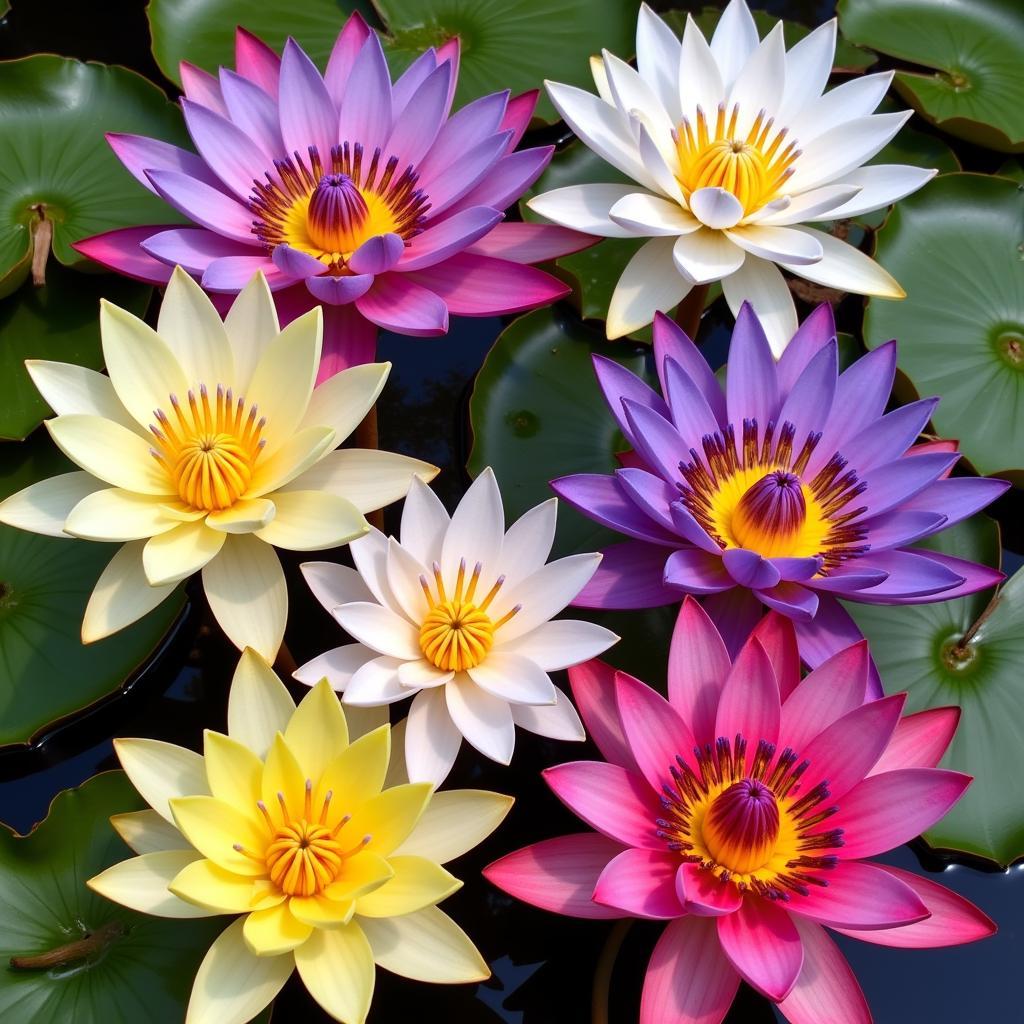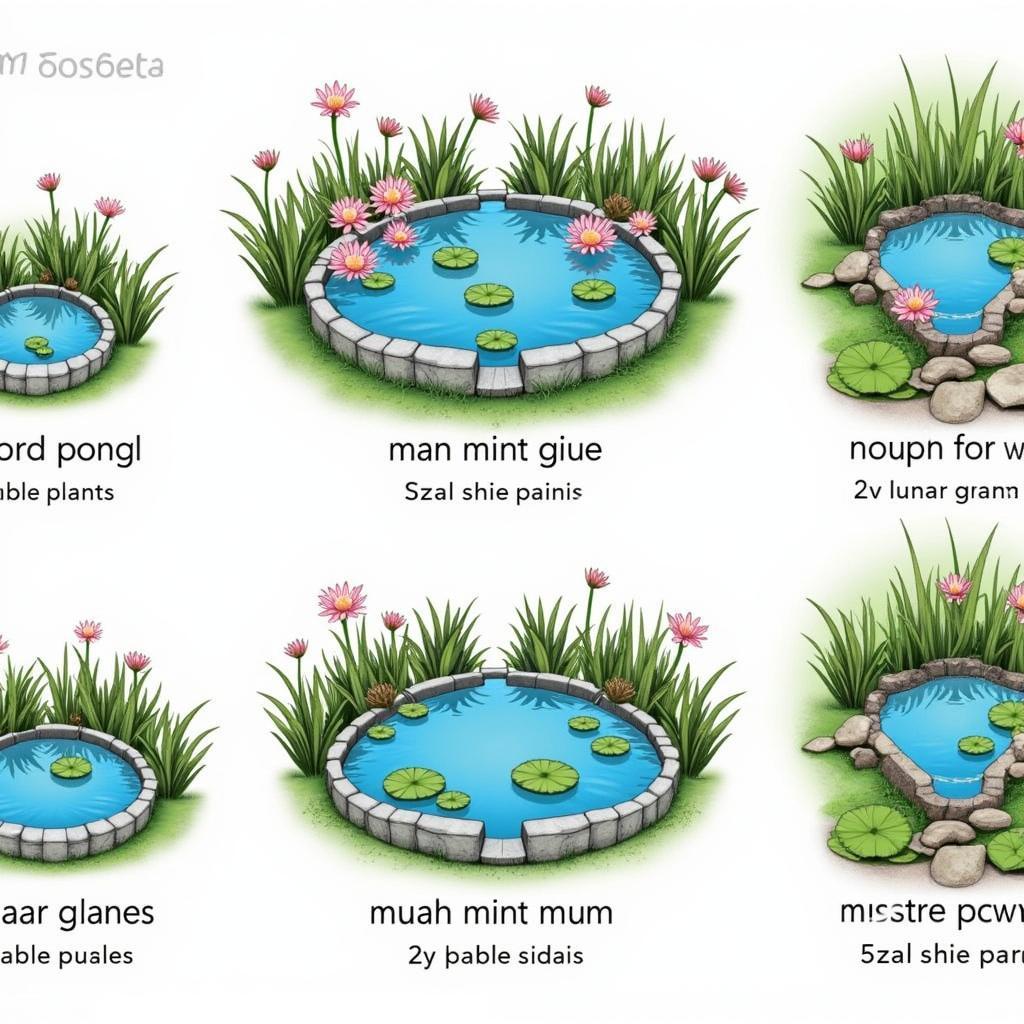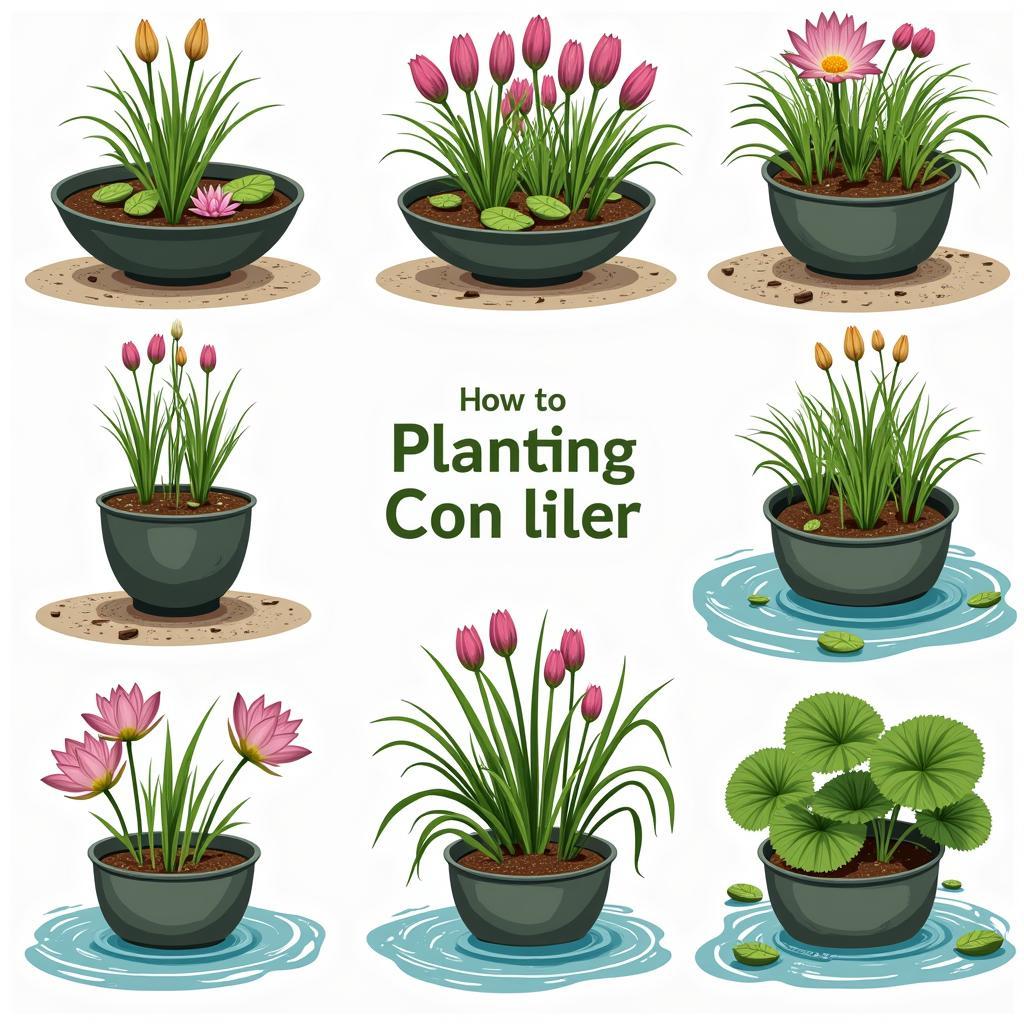Water lilies, with their enchanting blooms and serene presence, are a stunning addition to any water garden. These aquatic plants bring an element of tranquility and natural beauty to ponds, lakes, and even small water features. Whether you’re an experienced gardener or just starting, this comprehensive guide will equip you with everything you need to know about growing and caring for Water Lily Live Plants.
Understanding Water Lilies
Before diving into the specifics of water lily care, it’s helpful to understand their basic needs and growth habits.
What are Water Lilies?
Water lilies are aquatic flowering plants belonging to the Nymphaeaceae family. They are characterized by their round, floating leaves and vibrant, often fragrant flowers that bloom above the water’s surface. Their roots anchor in the muddy bottom of ponds, lakes, and slow-moving streams, while their leaves and flowers bask in the sunlight.
Types of Water Lilies
Water lilies are broadly classified into two categories: hardy and tropical.
-
Hardy water lilies are more tolerant of cold temperatures and can survive freezing winters in most regions. They are typically planted in spring and bloom from late spring to early fall.
-
Tropical water lilies are more sensitive to cold and thrive in warmer climates. They are known for their larger, more vibrant blooms and longer blooming season, often extending into fall.
 hardy water lily varieties
hardy water lily varieties
Choosing the Right Water Lily
Selecting the appropriate water lily for your pond or water garden is crucial for their successful growth. Consider the following factors:
-
Climate: Determine whether your region is suitable for hardy or tropical water lilies based on average temperatures and frost dates.
-
Pond size and depth: Water lilies come in a range of sizes. Smaller varieties are ideal for miniature ponds or containers, while larger ones require more space to spread. Water depth also plays a role, with some lilies preferring shallower water than others.
-
Sunlight exposure: Most water lilies thrive in full sun (at least 6 hours per day). However, some varieties tolerate partial shade.
-
Desired bloom color and fragrance: Water lilies offer a breathtaking array of colors, from pure whites and yellows to vibrant pinks, reds, and even blues. Some varieties also boast delightful fragrances.
 water lily pond size guide
water lily pond size guide
Planting Water Lilies
The planting process for water lilies differs slightly depending on whether you’re using potted plants or bare-root tubers.
Planting Potted Water Lilies
-
Select the right container: Choose a wide, shallow container with multiple drainage holes. Avoid using containers that have previously held soil as it may contain harmful pathogens.
-
Prepare the planting medium: Use a heavy clay loam or a commercially available aquatic planting mix. Avoid using regular garden soil as it can create cloudy water.
-
Position the plant: Gently remove the water lily from its original pot and place it in the center of the new container, ensuring the crown of the plant (where the leaves and stems emerge) is slightly above the soil line.
-
Add fertilizer: Mix in a slow-release aquatic fertilizer according to the manufacturer’s instructions.
-
Top with gravel: Cover the planting medium with a layer of pea gravel or small rocks to secure the plant and prevent the soil from floating.
-
Submerge the container: Gradually lower the container into your pond or water feature, ensuring the water level is just above the leaves.
Planting Bare-Root Tubers
-
Prepare the tuber: Inspect the tuber for any damaged or diseased areas and trim them away with a sharp, clean knife.
-
Select a planting container: Similar to potted water lilies, use a wide, shallow container with drainage holes.
-
Position the tuber: Place the tuber horizontally in the container, with the growing tip (the pointed end) facing slightly upwards.
-
Cover with planting medium: Add a layer of aquatic planting mix or heavy clay loam, ensuring the growing tip is exposed.
-
Add fertilizer and gravel: Incorporate slow-release aquatic fertilizer and top with a layer of gravel.
-
Submerge the container: Gradually lower the container into the water, ensuring the growing tip is submerged.
 planting water lily tubers step-by-step guide
planting water lily tubers step-by-step guide
Caring for Water Lilies
Providing your water lilies with proper care is essential for their long-term health and vibrant blooms.
Water Quality and Fertilization
-
Clean water: Maintain clean and clear water in your pond or water feature. Excess debris and algae can deplete oxygen levels and hinder plant growth. Regular cleaning and the use of water filters can help.
-
Fertilization: Water lilies are heavy feeders and benefit from regular fertilization. Use a slow-release aquatic fertilizer specifically formulated for water plants. Follow the manufacturer’s instructions carefully to avoid over-fertilizing.
Sunlight Requirements
Water lilies thrive in full sun, requiring at least 6 hours of direct sunlight per day. Choose a location for your pond or water feature that receives ample sunlight throughout the day.
Pruning and Division
-
Deadheading: Regularly remove spent blooms by cutting them back to the base of the stem. This encourages new flower production and prevents the pond from becoming cluttered.
-
Division: Over time, water lilies can become overcrowded in their containers. Division is necessary to maintain their health and vigor. Divide plants in spring or early summer by carefully separating the rhizomes (underground stems).
Common Water Lily Problems and Solutions
While generally low-maintenance, water lilies can sometimes encounter problems. Here are a few common issues and their solutions:
-
Yellowing leaves: This can indicate a lack of nutrients, particularly iron. Use an iron-chelated fertilizer to address the deficiency.
-
Holes in leaves: Pests like water lily aphids or leaf beetles can cause holes in the leaves. Inspect the plants regularly and use insecticidal soap or other appropriate treatments if necessary.
-
Lack of blooms: Insufficient sunlight is often the culprit behind poor blooming. Ensure your water lilies receive at least 6 hours of direct sunlight per day.
Water Lily FAQs
Here are answers to some frequently asked questions about water lilies:
1. How long do water lilies live?
With proper care, water lilies can live for many years. Hardy varieties can survive for decades, while tropical varieties may need to be replaced every few years depending on the climate.
2. Do water lilies clean the water?
Water lilies do help to improve water quality by absorbing excess nutrients and providing shade, which can limit algae growth. However, they are not a substitute for proper pond filtration and maintenance.
3. Can I grow water lilies in a container?
Yes, water lilies can be successfully grown in containers. Choose a suitable container size based on the lily variety and ensure it has drainage holes.
4. When is the best time to plant water lilies?
The ideal time to plant water lilies is in spring after the danger of frost has passed.
5. How deep should the water be for water lilies?
Water depth requirements vary depending on the lily variety. Generally, most water lilies prefer a depth of 12-18 inches.
Explore More
For additional resources and information on water gardening and aquatic plants, visit our website or contact our team of experts at 0902476650 or [email protected]. We’re here to help you create a thriving and beautiful water garden oasis!





